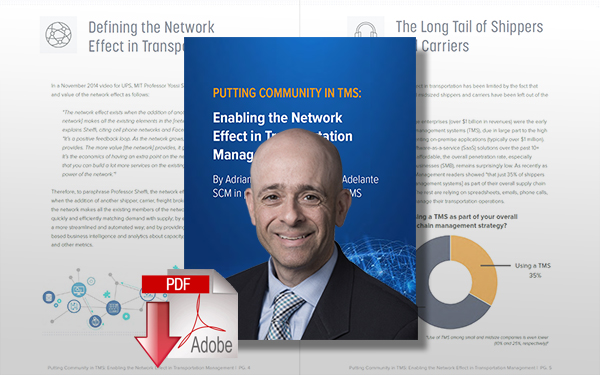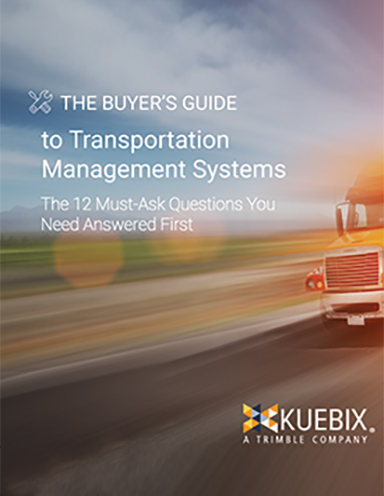2019 Holiday Shopping Season Parcel Shipping Best Practices

Any company that ships parcel during the holidays can benefit from being more informed, having plans and strategies ahead of time, connections with different parcel carriers, and a strategy for post-holiday returns.
Holiday Shopping Season
Many companies are currently gearing up for the holiday shopping season.
Whether they are brick-and-mortar businesses or e-commerce companies, the peak season for many sellers begins in mid-November and ends in early January.
This year, the National Retail Federation’s annual shopper survey revealed that more than half of consumers said they would shop online.
To keep up with rising customer expectations about home delivery, even traditional brick-and-mortar companies are branching out with e-commerce platforms so as not to lose business.
In order to keep up with the pace of holiday shopping, retailers need to be aware of several parcel shipping best practices.
Best Practices for Any Company Shipping Parcel During the 2019 Holiday Season
Know Important Dates During the Holiday Season
The first thing shippers need to be aware of when planning their shipping strategy for the holidays is important shopping dates.
These are days when consumers will be expecting to see discounts and when many shoppers will make significant purchases ahead of the holidays.
The unofficial holiday shopping season begins on November 11, 2019, and ends January 1, 2020 (though returns strategies must continue well past then).
Here is a breakdown of important shopping dates to be aware of this year:
- November 11 – Veterans Day
- November 29 – Black Friday
- November 30 – Small Business Saturday
- December 2 – Cyber Monday
- December 14 – Free Shipping Day
These dates are days that many retailers expect heavy shopping volume and consumers expect discounts and promotions.
Black Friday and Cyber Monday may be the most well known of all of these days, but Small Business Saturday and Free Shipping Day can be important to businesses holiday revenue as well.
Free Shipping Day, in particular, is gathering steam and may present an opportunity for retailers to win back market share from competitors who offer free shipping year-round.
This unofficial holiday is a one-day event that retailers who are shipping parcels can participate in with a pledge to their customers to have products delivered for free ahead of Christmas day.
By offering specific promotions around any of these important shopping days, retailers can capture new business and continue to delight their customers.
However, just advertising around important shopping days isn’t enough if the company fails to deliver products in time for specific days. Be aware of these important shipping deadlines when evaluating your logistics process prior to the holiday season.
- November 28 – Thanksgiving
- December 22-30 – Hanukkah
- December 25 – Christmas
- December 31 – New Year’s Eve
- January 1 - New Year's Day
These are the most common day's consumers expect to receive their parcel deliveries by. If a retailer cannot deliver in time for a specific holiday, the shopper is likely to abandon their cart and look elsewhere to make their purchase.
Leverage a TMS for Greater Parcel Shipping Flexibility
In order to keep up with deliveries ahead of specific holidays, retailers need to have a strategy to keep up with demand and deliver orders on time. This means doing the work ahead of time to have a concrete parcel shipping strategy in place. For many companies, this means connecting with several parcel shipping services.
Being able to quickly access different carriers’ parcel shipping rates through a single platform is essential for companies looking to optimize operations during the holidays. By leveraging a transportation management system (TMS) retailers can quickly and easily compare different parcel rates to ensure that orders are being delivered to customers before holiday deadlines at the lowest rate. This practice also helps companies organize increased order volume and provide their customers with different self-serve delivery options.
Companies with large e-commerce presences may find it beneficial to set up a direct integration between a TMS and an e-commerce platform. By doing so, they give their customers the ability to select the shipping rate and delivery length that best suits their needs. This cuts down on the workload for teams and ensures that customers are always satisfied with their parcel delivery experience.
Consider Offering Free Shipping
According to a National Retail Federation quarterly Consumer View report, “75 percent of consumers surveyed expect delivery to be free even on orders under $50, up from 68 percent a year ago (2018).” That’s a big deal for retailers looking to see positive growth in online sales this holiday season. The decision to buy or not to buy can easily hinge on whether or not the retailer offers free parcel shipping.
While many may assume that younger consumers are the ones shifting the expectation of free shipping as an e-commerce norm, that assumption is incorrect. The report goes on to state:
“Baby boomers (born 1946-1964) demand free shipping the most, with 88 percent expecting it. That compares with 77 percent for Generation X (1965-1980), 61 percent for millennials (1981-1994) and 76 percent for Generation Z (1995 and later).”
This proves that no matter which segment of the marketplace your company targets, it’s likely a good idea to offer some form of free shipping. Whether it’s free shipping on orders that pass a certain threshold or free shipping on orders with longer lead time.
Insure Yourself Against Poor Service Levels
One pitfall that companies who ship the final mile to their customers’ homes face is the missed delivery. Whether the delivery is simply late, it gets damaged in transit, or worst of all, lost, companies run the risk of disappointing their customers and eating the cost of shipping. This can be a lose-lose situation if a plan isn’t put into place ahead of time.
Shipping partners like Pitney Bowes offer 3-day guaranteed delivery that retailers can take advantage of when shipping products via USPS over the holidays. This Guaranteed Delivery program provides shippers with a full refund if their parcel isn’t delivered within the three-day window. This level of security helps companies confidently expand their e-commerce presence without worrying about the possible negative effects that can arise from unpreventable missed deliveries.
Have a Solid Returns Strategy
Even when the major shopping days and holidays are through, logistics and customer service teams across the country will still be hard at work managing the returns process. Pitney Bowes’ 2019 Holiday Readiness Guide details how companies can best manage post-holiday returns with three tips:
- Make Returns Fast and Easy
- Challenge Your Real Motivations
- Make the Label Easy to Find
Essentially, the returns process for parcel orders shouldn’t be something for companies to shy away from. Consumers will appreciate a fast and efficient returns process and are more likely to turn into repeat customers if their returns experience is treated as a priority by the company. Instead of making the process difficult by hiding returns information in the fine print or charging exorbitant shipping fees, companies can win customer loyalty and positively impact their businesses long term by making the process simple.
The 2019 Holiday Shopping Season is Here
With Veteran’s Day on November 11th this year, retailers should keep in mind these parcel shipping best practices so that they can delight their customers and grow their businesses. Any company that ships parcel during the holidays can benefit from being more informed, having plans and strategies ahead of time, connections with different parcel carriers, and a strategy for post-holiday returns. By following these best practices, companies can position themselves for the best chance of success during the 2019 holiday shopping season.
Related Article: Want To Be Like Amazon? Treat Your Customers Like Kings
Related Resources
Kuebix Freight Intelligence: 3 TMS Related Case Studies New!
In these 3 transportation management system case studies, we detail how AMMEX, Master Magnetics, and Show Me Global Logistics implemented Kuebix TMS to save time, improve order accuracy and visibility, and connect with shippers. Download Now!
Putting Community in TMS: Enabling the Network Effect in Transportation Management
In this eBook, Adrian Gonzalez, President, Adelante SCM in partnership with Kuebix TMS, describes how transportation management systems are transitioning from being “inside the four walls” applications to becoming operating systems that power transportation communities and enable network effects. Download Now!
More Kuebix Resources
Article Topics
Kuebix News & Resources
Visibility + TMS = A Winning Combination Trimble Placed in 2021 Gartner Magic Quadrant for Real-Time Transportation Visibility Platforms Kuebix Positioned Again as a Challenger in 2021 Gartner Magic Quadrant for TMS The Buyer’s Guide to Transportation Management Systems TMS Update: Adoption accelerates The Logistics of Valentine’s Day during COVID-19 Pandemic Research: Trends in the Supply Chain and Their Impact on the Transportation Management System Market More KuebixLatest in Transportation
Ranking the World’s 10 Biggest Supply Chains The Top 10 Risks Facing Supply Chain Professionals Walmart’s Latest Service: Ultra Late-Night Delivery City of Baltimore Files Lawsuit to Recoup Money for Collapsed Bridge The Era of Self-Driving Tractor-Trailers Set to Begin Is the Trailers as a Service (TaaS) Model Right For Your Business? Why Grocery Shoppers are Leaving Stores to Buy Their Food Online More Transportation
















